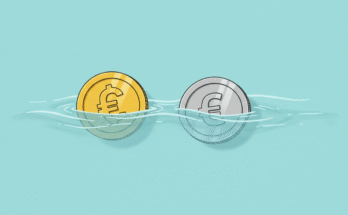The decentralized finance (DeFi) ecosystem has revolutionized the way individuals interact with financial services, offering unprecedented access to trading, lending, and earning opportunities. However, as with any financial system, DeFi comes with its own set of complexities and risks. One such concept that traders often encounter is slippage. While it may seem like a minor detail, slippage can significantly impact your trading outcomes. In this blog post, we’ll explore what slippage is, why it matters, and how you can minimize its effects when trading in DeFi.

What Is Slippage?
Slippage refers to the difference between the expected price of a trade and the actual price at which the trade is executed. In other words, it’s the discrepancy that occurs when the price of an asset changes between the time a trade is initiated and when it is finalized. This phenomenon is especially prevalent in fast-moving markets, such as those found in DeFi.
→ Slippage can occur in both directions:
- Positive Slippage: When the actual execution price is better than the expected price.
- Negative Slippage: When the execution price is worse than the expected price.
For traders, negative slippage is often a concern because it can lead to unexpected costs or reduced profits.
Why Does Slippage Occur in DeFi?
→ Several factors contribute to slippage in DeFi trading:
- Market Volatility: DeFi markets are known for their high volatility. Prices can change rapidly due to large trades, market sentiment, or external events. If the price of an asset shifts significantly between the time you submit your trade and when it is executed, slippage occurs.
- Liquidity Constraints: Liquidity refers to how easily an asset can be bought or sold without affecting its price. In decentralized exchanges (DEXs), liquidity is provided by users who contribute assets to liquidity pools. If a pool has low liquidity, even small trades can cause significant price changes, leading to slippage.
- Automated Market Makers (AMMs): Unlike traditional order book systems used in centralized exchanges, DEXs often rely on automated market makers (AMMs) to facilitate trades. AMMs use algorithms to determine asset prices based on the ratio of tokens in a liquidity pool. Large trades can disrupt this balance, resulting in price shifts and slippage.
- Network Congestion: The blockchain network on which a DEX operates can also impact slippage. During periods of high network activity, transaction delays may occur, increasing the likelihood of slippage as prices continue to fluctuate.
Why Slippage Matters for Traders
→ Slippage is more than just an inconvenience, it can directly affect your trading strategy and profitability. Here’s why it matters:
- Cost Implications: Negative slippage means you might end up paying more for an asset or receiving less than expected when selling. Over time, these discrepancies can add up and erode your profits.
- Impact on Large Trades: Traders executing large orders are particularly vulnerable to slippage because their trades can significantly impact liquidity pools. This makes it crucial for institutional traders and whales to account for slippage when planning their strategies.
- Risk Management: Slippage introduces an additional layer of uncertainty into trading. Without proper precautions, traders might inadvertently expose themselves to higher risks than anticipated.
- Effect on Arbitrage Opportunities: Arbitrage traders rely on price discrepancies between platforms to generate profits. Slippage can reduce or eliminate these opportunities, making arbitrage less lucrative.
How to Minimize Slippage in DeFi Trading
→ While slippage cannot be entirely avoided, there are several strategies you can employ to minimize its impact:
- Set Slippage Tolerance: Most DEXs allow users to set a slippage tolerance, a percentage that defines the maximum acceptable deviation from the expected price. For example, if you set a tolerance of 1%, your trade will only execute if the price remains within 1% of your initial expectation. This feature helps prevent trades from being executed at unfavorable prices.
- Trade During Low Volatility Periods: Timing your trades during periods of reduced market activity can help minimize slippage. Avoid trading during major market events or news announcements that could trigger significant price movements.
- Choose High-Liquidity Pools: Opt for liquidity pools with substantial reserves of the tokens you wish to trade. High liquidity reduces the likelihood of large price swings during your transaction.
- Split Large Trades: If you’re executing a large order, consider breaking it into smaller trades to reduce its impact on liquidity pools and minimize slippage.
- Monitor Network Activity: Keep an eye on blockchain network congestion and gas fees before initiating a trade. High congestion increases transaction delays, which can exacerbate slippage.
- Use Limit Orders: Some DeFi platforms offer limit orders, which allow you to specify the exact price at which you’re willing to execute a trade. Unlike market orders, limit orders won’t be executed if the price deviates beyond your specified limit.
- Leverage Advanced Tools: Certain trading platforms and aggregators provide tools that analyze liquidity and optimize trade execution across multiple pools or DEXs. These tools can help reduce slippage by finding the best possible route for your trade.
Conclusion
Slippage is an inherent part of trading in DeFi markets, but understanding its mechanics and implementing effective strategies can help you mitigate its impact. Whether you’re a casual trader or an institutional investor, being mindful of slippage ensures that you make informed decisions and maximize your returns.
As DeFi continues to evolve, advancements in technology and liquidity solutions may further reduce slippage risks over time. Until then, staying proactive and adopting best practices will remain essential for navigating this dynamic ecosystem. By recognizing the importance of slippage and taking steps to address it, traders can position themselves for greater success in the exciting world of decentralized finance.



